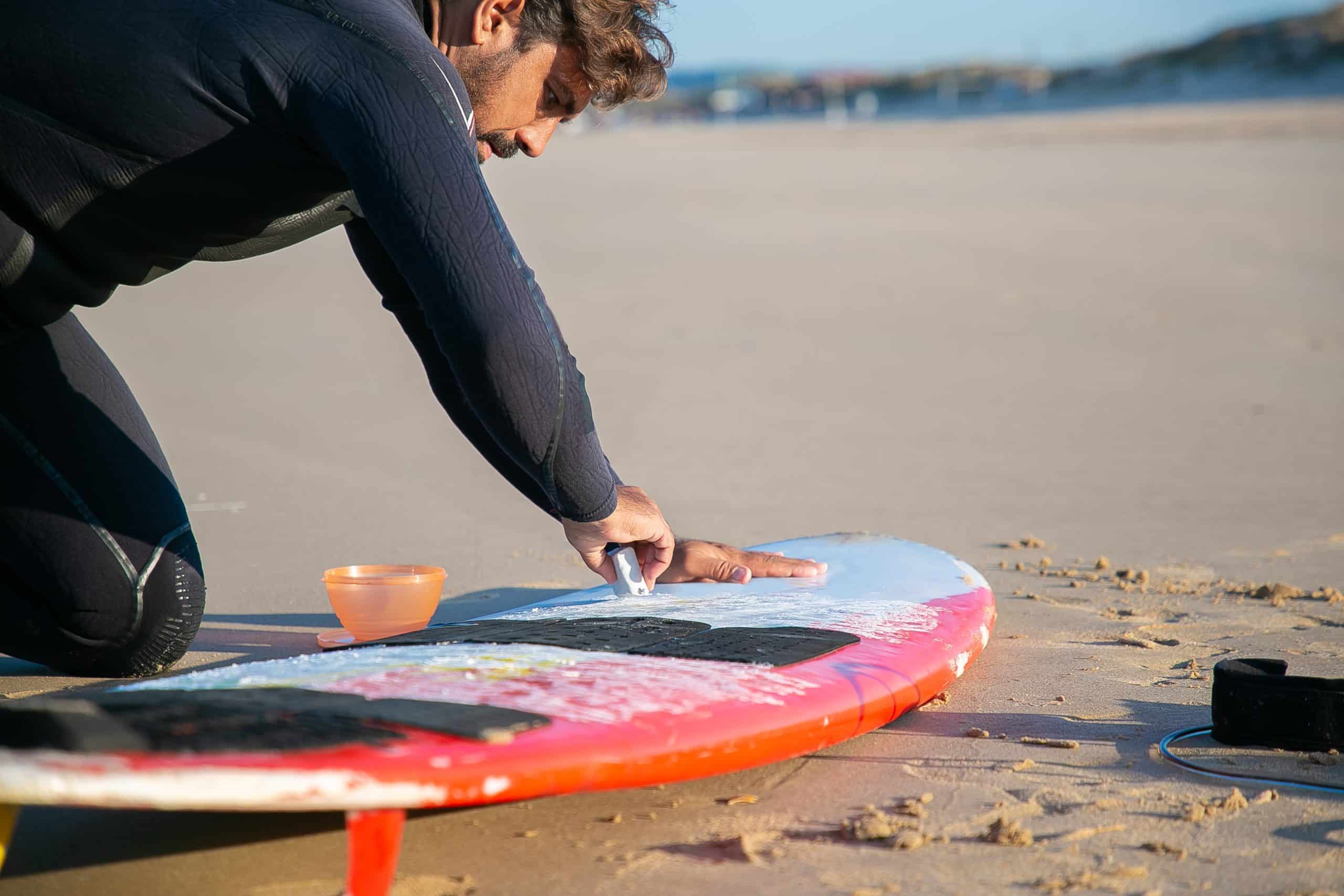Windsurfing gear maintenance: Make your equipment last, perform better

Windsurfing gear maintenance isn’t just a chore, it’s your ticket to longer sessions, safer rides, and serious savings. Whether you’re chasing waves or cruising calm waters, your equipment is your lifeline.
Let’s break down how a few smart habits can keep your gear performing like new.
With the right care, your windsurfing equipment could last 25% longer, no exaggeration. So if you’re ready to ride harder, smarter, and safer, it’s time to treat your gear like it deserves.
Essential windsurfing gear cleaning practices
Windsurfing gear maintenance starts with one golden rule: keep it clean. Salt, sand, and sun are relentless enemies to your board, sail, and rig. Letting grime build up accelerates wear and can cost you in performance and safety.
Think of cleaning as preventive care, not an afterthought. A regular rinse removes corrosive salt and abrasive particles. Occasional deep cleaning goes even further to protect your investment from unseen damage.
Staying consistent with these simple habits not only boosts your gear’s longevity but also gives you peace of mind every time you hit the water.
Rinsing after each use
Saltwater might look clean, but it leaves behind a corrosive film. A fresh water rinse right after your session prevents this buildup and protects both soft and hard components.
Pay attention to seams, zippers, and connection points. These areas are especially prone to corrosion and material fatigue if not flushed regularly.
Even if you’re short on time, a quick rinse is better than none. It’s a simple step that stops long-term damage before it begins.
Deep cleaning regularly
Routine rinsing is great, but deep cleaning keeps your gear in peak condition. Every few sessions, break out the mild soap and give everything a proper scrub.
Focus on trouble spots where salt and sand tend to accumulate, like mast bases, footstraps, and fin boxes. These areas often go unnoticed and degrade faster.
Make it a habit: inspect as you clean. Spotting damage early can save your gear from costly repairs, or worse, mid-session failure.
Storing your windsurfing equipment properly
Windsurfing gear maintenance isn’t complete without smart storage. Your gear spends more time out of the water than in it, so where you keep it matters just as much as how you use it.
Exposure to extreme heat, moisture, or UV rays can cause serious degradation. Even minor storage mistakes—like folding sails or stacking boards carelessly, can shorten gear life drastically.
The solution? Create a space that protects your equipment from environmental and mechanical damage so it’s always ready to go.
Ideal storage conditions
Choose a dry, shaded space that avoids temperature extremes. Heat and humidity warp boards, fade sails, and invite mildew and corrosion.
Avoid leaving gear in cars or sheds that get too hot. Use a ventilated space like a garage or equipment room whenever possible.
Controlling light and moisture exposure extends your gear’s structural integrity, keeping everything from sails to fins in fighting shape.
Organizing your gear
Good organization isn’t just tidy, it’s protective. Using dedicated bags, racks, or cases reduces accidental damage and prolongs material strength.
Hang sails vertically or roll them loosely to prevent creasing. Keep boards off the ground and fins stored in padded bags to avoid dings.
Label gear if needed and store similar components together to prevent misplacement and unnecessary stacking.

Inspecting and repairing your windsurfing gear
No windsurfing gear maintenance routine is complete without regular inspection and repairs. Catching a frayed line or a cracked fin early can mean the difference between a smooth session and a dangerous malfunction.
A quick visual check before each outing keeps you safer and avoids costly replacements. Over time, these small inspections add up to better performance and reliability.
Repairs don’t have to be complicated. Most fixes can be handled quickly with basic tools and materials if you act fast.
Checking for damage
Start with the sail, look for small tears or stretched seams that could rip under pressure. Then check your board for cracks, dents, or soft spots.
Inspect the mast and boom for corrosion, stress fractures, or loose fittings. Don’t forget the base and extension, which are common failure points.
A two-minute inspection can save you hours of frustration, or an early end to your session.
Repairing minor issues
If you find something, don’t wait. Use sail tape for minor tears, epoxy for cracks in boards, and anti-corrosion spray for metal parts.
Keep a repair kit in your car or gear bag. Having the right materials on hand makes it easy to fix issues before they get worse.
Small repairs made early prevent structural failures that could be expensive, or unsafe, later on.
Maintaining windsurfing sails for longevity
Sails are the power source of your ride, and their care is central to effective windsurfing gear maintenance. Neglect can lead to fading, tearing, and performance loss far sooner than expected.
Sails endure constant UV exposure, salt spray, and stress at every seam. That’s why they demand careful attention, both on and off the water.
Protect your investment by cleaning gently, storing smartly, and avoiding careless handling that can weaken the fabric.
Cleaning sails properly
Always rinse your sail after each use. This stops salt from drying into the fibers and breaking them down over time.
A gentle soap and water wash helps remove fine sand and grime that brushing alone might miss. Avoid harsh chemicals at all costs.
Focus on the stitching and batten pockets, these are high-stress zones where damage often begins.
Storing sails correctly
Roll your sail, don’t fold it. This avoids creases that can weaken the laminate or monofilm over time.
Use a dedicated sail bag, and store it in a cool, dry spot out of direct sunlight. UV damage is the enemy of every windsurf sail.
Avoid putting weight on top of sails in storage, pressure can deform battens and compromise shape.
Caring for windsurfing boards to maximize lifespan
Boards take a beating in the water and on land, so windsurfing gear maintenance for this component is critical. Surface damage, sun exposure, and impacts can reduce performance or even cause structural failure.
With proper protection and quick fixes, your board can last for years without major issues. Think of it as armor for your ride, shield it properly and it will carry you far.
From padded bags to UV sprays and prompt repairs, small actions have a big impact on your board’s longevity.
Protecting the board surface
Use a padded board bag every time you transport or store your board. It cushions against bumps and shields from sun.
Apply a UV protectant spray to minimize fading and brittleness from sun exposure, especially on bright days.
Never drag your board on sand or cement. This erodes the surface and increases water absorption risks.
Repairing dings and cracks
Even small dings should be fixed immediately to stop water from penetrating the foam core.
Clean the area, dry it thoroughly, and seal with marine-grade epoxy. This restores integrity and prevents delamination.
Make checking for dings part of your post-session routine. Quick fixes avoid long-term performance loss.
Extending the life of your mast and boom
Often overlooked, the mast and boom are essential to windsurfing gear maintenance. These components carry load and tension, making their care vital for safety and performance.
Exposure to saltwater and sun can quickly degrade metals and connection points. But with regular rinsing and lubrication, these issues are easily preventable.
Taking just a few minutes after each session protects your setup from corrosion and keeps every rig solid and responsive.
Preventing corrosion
Rinse the mast and boom thoroughly with freshwater after every use. Focus on joints, clips, and rope channels where salt accumulates.
Dry components completely before storing. Even small droplets can cause corrosion over time if left unchecked.
Apply corrosion inhibitors or lubricants to all metal parts. This adds a barrier that protects under extreme conditions.
Checking for wear
Regularly check for hairline cracks or bends, especially where the boom attaches to the mast. These are stress points that often fail first.
Test joints for tightness. Loose hardware reduces control and increases the risk of gear failure mid-session.
Replace any part showing signs of fatigue, better safe than sorry when your ride depends on it.
Windsurfing gear maintenance is the foundation of every great session. From the sails that catch the wind to the boards that carry you, every piece deserves attention and care.
By rinsing, storing, inspecting, and repairing your gear regularly, you’re not just preserving equipment, you’re protecting your performance, your investment, and your safety.
Stay consistent, stay proactive, and your gear will reward you with seasons of smooth, unforgettable rides.
Key PointBrief Description
🌊 Regular CleaningRinse gear after each use to remove salt, sand, and debris.
☀️ Proper StorageStore in a cool, dry place away from direct sunlight to prevent UV damage.
🛠️ Inspect & RepairCheck for damage regularly and repair minor issues promptly to avoid escalation.
💼 Use Gear BagsUse storage bags for your sails, boards and mast to protect from dust and scratches.
Frequently Asked Questions (FAQs)
▼
Ideally, rinse your gear with fresh water after every use to remove salt and sand. A more thorough cleaning with mild soap and water should be done every few weeks, depending on how often you use your gear.
▼
Roll your sail loosely and store it in a sail bag. Keep it in a cool, dry place away from direct sunlight. Avoid folding the sail, as this can create creases that reduce its performance.
▼
Use sail repair tape to fix small tears immediately. Clean the area around the tear, apply the tape smoothly, and ensure there are no air bubbles. This prevents the tear from spreading.
▼
It’s best to use mild soap specifically designed for marine equipment. Regular soap can sometimes contain harsh chemicals that can damage the materials of your windsurfing gear over time.
▼
Apply a UV protectant spray to the surface of your board regularly. Store your board in a board bag when not in use, especially if it’s going to be exposed to direct sunlight for an extended period.
Conclusion
By following these windsurfing gear maintenance tips, you can significantly extend the life of your equipment and enjoy countless windsurfing sessions. Regular cleaning, proper storage, and proactive repairs are key to keeping your gear in top condition, ensuring optimal performance and safety on the water.





